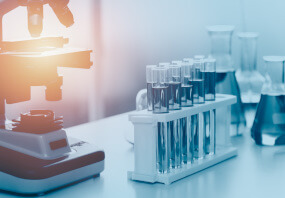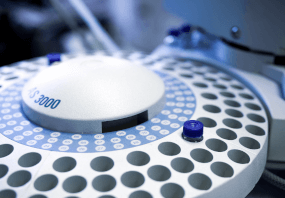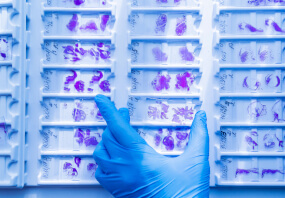General description
Anti-human serum albumin antibody, mouse monoclonal (mouse IgG2a isotype) is derived from the HSA-11 hybridoma, produced by the fusion of mouse myeloma cells and splenocytes from BALB/c mouse immunized with human serum albumin (HSA). Monoclonal anti-human serum albumin specifically recognizes human albumin derived from sera, plasma or liver cells.
HSA is encoded by the gene mapped to human chromosome 4q13.3. It is characterized with three homologous domains that assemble to form a heart-shaped molecule. HSA constitutes around 60-65% of total serum protein.
The human serum albumin (HSA) gene is located on human chromosome 4. It encodes a globular protein that is the most prominent protein in human sera. It reaches a total concentration of about 60% of the total proteins in the blood serum. The globular protein is composed of 585 amino acids and comprises of three globular domains that resemble each other in structure, each containing two subdomains.
Specificity
Anti-Human Serum Albumin antibody recognizes human albumin derived from sera, plasma or liver cells.
Immunogen
Human Serum Albumin
Application
The antibody can be used in enzyme linked immunosorbent assay (ELISA), immunoblotting (~70 kDa) and immunohistochemistry.
Biochem/physiol Actions
Human serum albumin (HAS) serves as a transport and depot protein for several endogenous ligands including fatty acids, hormones, steroids, bilirubin and heme. High intravascular concentration of HSA enables it to play an essential role in exerting colloid osmotic pressure and thereby to regulate the oncotic pressure and volume of blood. It also acts as an antioxidant and is required for exerting Donnan effect in the capillaries. Mutations in the gene is associated with the development of bisalbuminaemia or alloalbuminaemia. Deficiency of the gene leads to analbuminaemia.
Human serum albumin (HSA) is a single non-glycosylated chain that has excellent binding capacity for various endogenous and exogenous ligands. It functions as a plasma transporter molecule and primarily binds to non-esterified long-chain fatty acids. It also binds to and transports various metabolites, such as bilirubin, steroid hormones, thyroxine, tryptophan, certain vitamins and metal ions within the body. It also has the ability to bind to several drugs and affects their pharmacokinetics and pharmacodynamics. HSA functions as a NO-carrier and is also responsible for the antioxidant capacity of human serum. In cases of acute hemolysis, HSA binds to heme in the blood stream and transports to hemopexin, where in it is reabsorbed by parenchymal liver cells.
Physical form
Solution in 0.01 M phosphate buffered saline, pH 7.4, containing 15 mM sodium azide.
Storage and Stability
For continuous use, store at 2-8°C for up to one month. For extended storage, freeze in working aliquots. Repeated freezing and thawing is not recommended. If slight turbidity occurs upon prolonged storage, clarify the solution by centrifugation before use. Working dilution samples should be discarded if not used within 12 hours.
Disclaimer
Unless otherwise stated in our catalog or other company documentation accompanying the product(s), our products are intended for research use only and are not to be used for any other purpose, which includes but is not limited to, unauthorized commercial uses, in vitro diagnostic uses, ex vivo or in vivo therapeutic uses or any type of consumption or application to humans or animals.
Shipping Information:
Dry Ice Surcharge & Ice Pack Shipments: $40
More Information: https://cenmed.com/shipping-returns
- UPC:
- 41181531
- Condition:
- New
- Availability:
- 3-5 Days
- Weight:
- 1.00 Ounces
- HazmatClass:
- No
- MPN:
- SAB4200711-100UL
- Temperature Control Device:
- Yes












